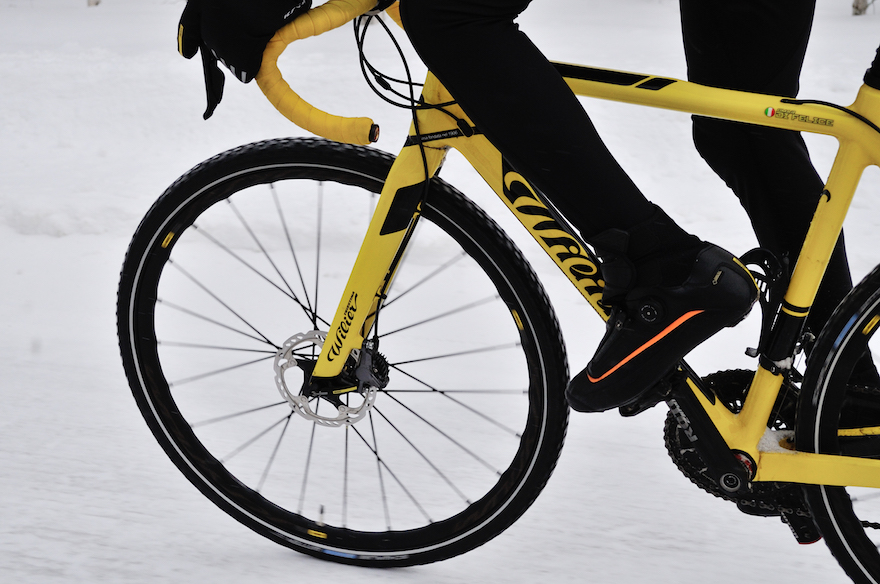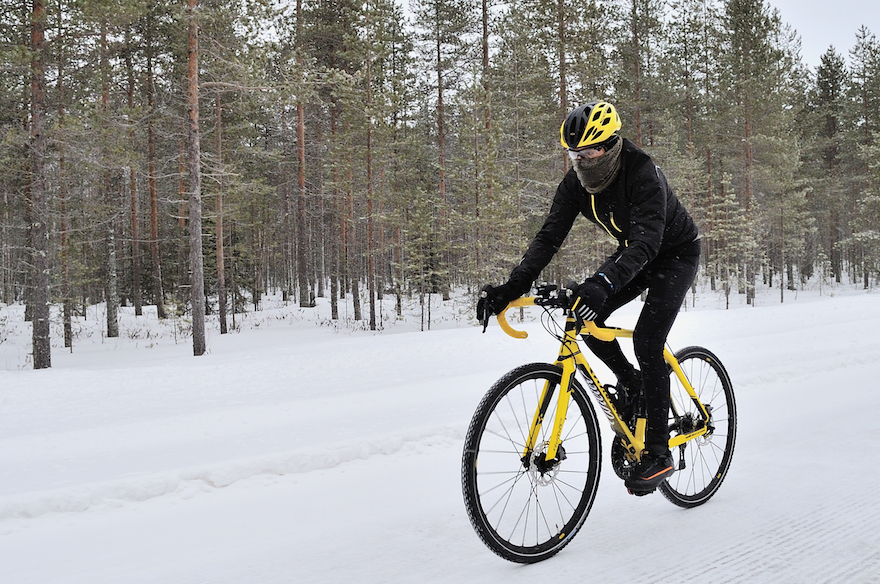I train 5–6 days/week for a total amount of 5–600 km/week.
Not so impressive if you consider the normal activity of a pro rider, but that's winter conditions, under the rain or the snow, and usually includes about 8 - 10k of ascent per week. Last year I did 31.000 kilometers, between training, races and solo adventures.
My coldest ride saw temperature of -20 to -32°C.
It was the last stage of my 2016 Norwegian adventure. It was by far the coldest ride I’ve ever done.

Spikes and disk brakes are the way to go.
You need spiked tires – and disc brakes
For winter rides like the one I will do in Finland I use a Wilier Triestina Cross Disc Carbon, equipped with a Shimano Ultegra Disc Groupset and Mavic Disc Wheelset. I will use two kinds of tires: normal tires in case of standard conditions, and spiked tires in case of very icy roads. On my stem I will put my Suunto Spartan Ultra watch: I love recording the ride to analyse the performance and to see what I’ve done. But one of the most important things is disc brakes – I did my first Arctic adventure with normal brakes, and it was horrible.
Always listen your body
During my adventures I usually have a support car. They film my ride, and support me in case of an emergency. My girlfriend is an expert in first aid. The most important thing is to stop when you “hear” something strange from your body. During 2016 adventure in Norway, for example, I stopped for two hours because I simply lost all feeling in two fingers.

"Listen to your body," says Omar.
A standard day is 10–12 hours on the bike
I wake up to a good breakfast at 6. I’m on the road at 8. Somewhere between 18:00 and 20:00 I stop, have a good dinner, then check over the bike.
You’ve got to eat right
You need the best possible food to have enough energy – and in cold conditions, your consumption will be higher than ever. It’s a challenge for me -– and my support team too!
Follow along with Omar during his current Arctic challenge – cycling across Finland from South to North – at his Facebook page! So far he has covered 826 km on complicated icy road surfaces in four days.